Car Diagnostic Icons are vital indicators of your vehicle’s health, alerting you to potential problems that need attention. CAR-TOOL.EDU.VN offers comprehensive resources to help you understand these icons and maintain your car. By understanding these signals, you can prevent costly repairs and ensure your safety on the road with our vehicle diagnostic solutions.
Contents
- 1. Decoding the Car Diagnostic Icon: An Introduction
- 1.1. Why is Understanding the Car Diagnostic Icon Important?
- 1.2. Common Types of Car Diagnostic Icons
- 1.3. The Role of CAR-TOOL.EDU.VN in Understanding Car Diagnostics
- 2. Essential Car Diagnostic Icons and Their Meanings
- 2.1. Engine Warning Light (Check Engine Light)
- 2.1.1. What Does the Check Engine Light Indicate?
- 2.1.2. Common Causes of the Check Engine Light
- 2.1.3. How to Address the Check Engine Light
- 2.2. Oil Pressure Warning Light
- 2.2.1. What Does the Oil Pressure Warning Light Indicate?
- 2.2.2. Potential Consequences of Low Oil Pressure
- 2.2.3. Immediate Steps to Take
- 2.3. Engine Temperature Warning Light
- 2.3.1. What Does the Engine Temperature Warning Light Indicate?
- 2.3.2. Risks of an Overheating Engine
- 2.3.3. How to Handle an Overheating Engine
- 2.4. Tire Pressure Warning Light (TPMS)
- 2.4.1. What Does the Tire Pressure Warning Light Indicate?
- 2.4.2. Benefits of Maintaining Proper Tire Pressure
- 2.4.3. Steps to Take When the TPMS Light Illuminates
- 2.5. Anti-lock Braking System (ABS) Warning Light
- 2.5.1. What Does the ABS Warning Light Indicate?
- 2.5.2. Importance of the ABS
- 2.5.3. Actions to Take When the ABS Light Comes On
- 2.6. Battery Alert Light
- 2.6.1. What Does the Battery Alert Light Indicate?
- 2.6.2. Common Causes of the Battery Alert Light
- 2.6.3. Steps to Resolve Battery Issues
- 3. Advanced Car Diagnostic Icons: Beyond the Basics
- 3.1. Traction Control Light
- 3.1.1. Understanding Traction Control
- 3.1.2. When the Traction Control Light Illuminates
- 3.1.3. Troubleshooting Traction Control Issues
- 3.2. Airbag Warning Light
- 3.2.1. What the Airbag Warning Light Signifies
- 3.2.2. Potential Airbag System Problems
- 3.2.3. Immediate Actions to Take
- 3.3. Lane Departure Warning Light
- 3.3.1. Understanding Lane Departure Warning Systems
- 3.3.2. Interpreting the LDW Light
- 3.3.3. Maintaining Your LDW System
- 3.4. Security Indicator Light
- 3.4.1. The Role of the Security System
- 3.4.2. Interpreting the Security Light
- 3.4.3. Troubleshooting Security System Issues
- 3.5. Fog Lamp Indicator Light
- 3.5.1. Understanding Fog Lamps
- 3.5.2. Proper Use of Fog Lamps
- 3.6. Washer Fluid Indicator Light
- 3.6.1. The Importance of Washer Fluid
- 3.6.2. Maintaining Washer Fluid Levels
- 3.7. Brake Warning Light
- 3.7.1. Understanding the Brake Warning Light
- 3.7.2. Common Causes of the Brake Warning Light
- 3.7.3. Actions to Take When the Brake Warning Light Comes On
- 3.8. Transmission Temperature Warning Light
- 3.8.1. Understanding Transmission Temperature
- 3.8.2. Risks of Overheating Transmission
- 3.8.3. How to Handle an Overheating Transmission
- 4. Utilizing Diagnostic Tools for a Deeper Understanding
- 4.1. Introduction to Car Diagnostic Tools
- 4.2. Types of Diagnostic Tools
- 4.3. Benefits of Using Diagnostic Tools
- 4.4. How to Use a Diagnostic Tool
- 4.5. Popular Diagnostic Tool Brands
- 5. Regular Maintenance: Preventing Car Diagnostic Icons from Appearing
- 5.1. The Importance of Regular Maintenance
- 5.2. Key Maintenance Tasks
- 5.3. Creating a Maintenance Schedule
- 5.4. The Role of CAR-TOOL.EDU.VN in Vehicle Maintenance
- 6. Addressing Specific Car Diagnostic Icon Issues
- 6.1. Check Engine Light: DIY vs. Professional Help
- 6.2. Oil Pressure Warning Light: Immediate Actions
- 6.3. Engine Temperature Warning Light: Cooling Down the Engine
- 6.4. Tire Pressure Warning Light: Inflating Tires
- 6.5. ABS Warning Light: Professional Diagnosis
- 7. Understanding Car Diagnostic Icons for Different Car Brands
- 7.1. Toyota
- 7.2. Honda
- 7.3. Ford
- 7.4. Chevrolet
- 7.5. BMW
- 7.6. Mercedes-Benz
- 8. Common Misconceptions About Car Diagnostic Icons
- 8.1. Myth: A Yellow Light Means It’s Okay to Ignore
- 8.2. Myth: The Check Engine Light Always Means a Major Problem
- 8.3. Myth: Clearing the Codes Fixes the Problem
- 8.4. Myth: All Diagnostic Tools Are the Same
- 8.5. Myth: You Need to Be a Mechanic to Understand Diagnostic Icons
- 9. Staying Updated: New Car Diagnostic Icons and Technologies
- 9.1. Emerging Technologies
- 9.2. Keeping Up with Changes
- 10. CAR-TOOL.EDU.VN: Your Partner in Understanding Car Diagnostics
- 10.1. Comprehensive Resources
- 10.2. Expert Advice
- 10.3. User-Friendly Interface
- 10.4. Community Support
- 10.5. Commitment to Quality
- FAQ: Car Diagnostic Icons
1. Decoding the Car Diagnostic Icon: An Introduction
What exactly is a car diagnostic icon? It’s a visual cue displayed on your vehicle’s dashboard, designed to alert you to potential issues within your car’s systems. These icons, also known as warning lights or indicator lights, use standardized symbols to communicate specific problems or system statuses. Understanding these symbols is crucial for every car owner.
1.1. Why is Understanding the Car Diagnostic Icon Important?
Understanding the car diagnostic icon is essential for several reasons:
- Preventive Maintenance: Addressing issues early can prevent minor problems from escalating into major, costly repairs.
- Safety: Some icons indicate serious safety concerns that require immediate attention to avoid accidents.
- Performance: Monitoring these icons helps maintain optimal vehicle performance and fuel efficiency.
- Longevity: Promptly addressing issues can extend the lifespan of your vehicle.
According to a study by the National Institute for Automotive Service Excellence (ASE), vehicles that receive regular diagnostic checks have a 30% lower risk of major mechanical failures.
1.2. Common Types of Car Diagnostic Icons
Car diagnostic icons can be broadly categorized into three types, based on their color and urgency:
- Red Icons: Indicate critical issues requiring immediate attention. Examples include oil pressure warning, engine temperature warning, and brake system warning.
- Yellow/Orange Icons: Suggest potential problems that need to be addressed soon. These are less urgent than red icons but should not be ignored. Examples include check engine light, tire pressure warning, and ABS warning.
- Green/Blue Icons: Indicate that a system is active and functioning correctly. These are not warnings but rather system status indicators, such as headlights on or cruise control engaged.
Understanding these categories helps prioritize which issues need immediate attention and which can be addressed during your next service appointment.
1.3. The Role of CAR-TOOL.EDU.VN in Understanding Car Diagnostics
CAR-TOOL.EDU.VN provides a wealth of information and resources to help you decipher car diagnostic icons. Our website offers detailed explanations of each icon, troubleshooting tips, and expert advice on how to address the underlying issues. We aim to empower car owners with the knowledge they need to maintain their vehicles effectively.
2. Essential Car Diagnostic Icons and Their Meanings
What are the most important car diagnostic icons to be aware of? Here’s a breakdown of some of the most common and critical icons you might encounter on your dashboard.
2.1. Engine Warning Light (Check Engine Light)
2.1.1. What Does the Check Engine Light Indicate?
The check engine light, often depicted as an engine symbol, is one of the most common and often misunderstood car diagnostic icons. It can indicate a wide range of issues, from minor problems like a loose gas cap to severe engine malfunctions.
According to the Environmental Protection Agency (EPA), a faulty oxygen sensor, which can trigger the check engine light, can decrease fuel efficiency by as much as 40%.
2.1.2. Common Causes of the Check Engine Light
- Loose or Damaged Gas Cap: A loose gas cap can cause fuel vapors to escape, triggering the light.
- Faulty Oxygen Sensor: Oxygen sensors monitor the amount of oxygen in the exhaust and help regulate the fuel mixture.
- Catalytic Converter Failure: The catalytic converter reduces harmful emissions, and a failure can trigger the light.
- Spark Plug or Ignition Coil Issues: Problems with the spark plugs or ignition coils can cause misfires, leading to the light.
- Mass Airflow Sensor (MAF) Problems: The MAF sensor measures the amount of air entering the engine, and a faulty sensor can cause the engine to run poorly.
2.1.3. How to Address the Check Engine Light
- Check the Gas Cap: Ensure the gas cap is tightened properly.
- Use a Diagnostic Scanner: A diagnostic scanner can read the error code and provide more specific information about the issue.
- Consult a Mechanic: If the light persists or you notice performance issues, consult a professional mechanic for diagnosis and repair.
2.2. Oil Pressure Warning Light
2.2.1. What Does the Oil Pressure Warning Light Indicate?
The oil pressure warning light, typically shown as an oil can symbol, indicates a problem with your car’s oil pressure system. This could be due to low oil levels or a malfunctioning oil pump.
2.2.2. Potential Consequences of Low Oil Pressure
- Engine Damage: Insufficient lubrication can cause significant wear and tear on engine components.
- Overheating: Inadequate oil can lead to increased friction and overheating.
- Engine Failure: Prolonged low oil pressure can result in complete engine failure.
2.2.3. Immediate Steps to Take
- Stop the Vehicle: Pull over to a safe location as soon as possible.
- Check the Oil Level: Use the dipstick to check the oil level.
- Add Oil: If the oil level is low, add the recommended type of oil.
- Seek Professional Help: If the light remains on after adding oil, consult a mechanic to diagnose and repair the issue.
2.3. Engine Temperature Warning Light
2.3.1. What Does the Engine Temperature Warning Light Indicate?
The engine temperature warning light, usually represented by a thermometer symbol, indicates that your engine is overheating. This can be due to various issues, including low coolant levels, a malfunctioning thermostat, or a faulty radiator.
2.3.2. Risks of an Overheating Engine
- Damaged Head Gasket: Overheating can cause the head gasket to warp or crack.
- Cracked Engine Block: Extreme heat can lead to cracks in the engine block.
- Complete Engine Failure: Severe overheating can result in catastrophic engine damage.
2.3.3. How to Handle an Overheating Engine
- Pull Over Safely: Stop the vehicle in a safe location.
- Turn Off the Engine: Allow the engine to cool down.
- Check Coolant Levels: Once the engine has cooled, check the coolant level.
- Add Coolant: If the coolant level is low, add the recommended type.
- Contact a Mechanic: If the light persists or you suspect a more serious issue, seek professional assistance.
2.4. Tire Pressure Warning Light (TPMS)
2.4.1. What Does the Tire Pressure Warning Light Indicate?
The tire pressure warning light, often symbolized by a horseshoe-shaped icon with an exclamation point, indicates that one or more of your tires have significantly low or high pressure. This light is connected to the Tire Pressure Monitoring System (TPMS).
According to the National Highway Traffic Safety Administration (NHTSA), maintaining proper tire pressure can improve fuel efficiency by up to 3% and extend tire life.
2.4.2. Benefits of Maintaining Proper Tire Pressure
- Improved Fuel Efficiency: Correctly inflated tires reduce rolling resistance, improving fuel economy.
- Extended Tire Life: Proper pressure ensures even wear, prolonging the lifespan of your tires.
- Enhanced Safety: Correctly inflated tires provide better handling and braking performance.
2.4.3. Steps to Take When the TPMS Light Illuminates
- Check Tire Pressure: Use a tire pressure gauge to check the pressure in each tire.
- Inflate or Deflate Tires: Adjust the tire pressure to the recommended level, typically found on a sticker in the driver’s side doorjamb or in your owner’s manual.
- Reset TPMS: Some vehicles require a manual reset of the TPMS after adjusting tire pressure. Consult your owner’s manual for instructions.
- Inspect for Damage: Look for any signs of damage to the tires, such as cuts or bulges.
2.5. Anti-lock Braking System (ABS) Warning Light
2.5.1. What Does the ABS Warning Light Indicate?
The ABS warning light, often shown as the letters “ABS,” indicates a problem with your vehicle’s anti-lock braking system. The ABS helps prevent your wheels from locking up during hard braking, allowing you to maintain steering control.
2.5.2. Importance of the ABS
- Enhanced Control: ABS helps maintain steering control during emergency braking.
- Reduced Stopping Distance: In certain conditions, ABS can reduce stopping distance.
- Increased Safety: ABS improves overall safety by preventing skidding and loss of control.
2.5.3. Actions to Take When the ABS Light Comes On
- Drive with Caution: The regular braking system will still function, but the ABS is disabled.
- Avoid Hard Braking: Reduce your speed and avoid sudden stops.
- Seek Professional Inspection: Have the ABS system inspected and repaired by a qualified mechanic.
2.6. Battery Alert Light
2.6.1. What Does the Battery Alert Light Indicate?
The battery alert light, typically depicted as a battery symbol, indicates an issue with the vehicle’s charging system. This could be due to a faulty battery, a malfunctioning alternator, or a loose connection.
2.6.2. Common Causes of the Battery Alert Light
- Faulty Alternator: The alternator charges the battery while the engine is running, and a failure can cause the light to come on.
- Weak Battery: An old or damaged battery may not hold a charge properly.
- Loose or Corroded Connections: Loose or corroded battery cables can disrupt the charging system.
2.6.3. Steps to Resolve Battery Issues
- Check Battery Connections: Ensure that the battery cables are securely attached and free of corrosion.
- Test the Battery: Use a battery tester to check the battery’s voltage and condition.
- Test the Alternator: Have the alternator tested to ensure it is charging the battery properly.
- Replace Battery or Alternator: If either the battery or alternator is faulty, replace it as needed.
Understanding these essential car diagnostic icons and their meanings is crucial for maintaining your vehicle and ensuring your safety on the road. CAR-TOOL.EDU.VN is here to provide you with the information and resources you need to stay informed and proactive about your car’s health.
3. Advanced Car Diagnostic Icons: Beyond the Basics
Beyond the common car diagnostic icons, several advanced indicators provide valuable insights into your vehicle’s performance and safety systems.
3.1. Traction Control Light
3.1.1. Understanding Traction Control
The traction control system (TCS) helps prevent wheel spin and maintain traction, especially on slippery surfaces. The traction control light, often depicted as a car with wavy lines underneath, indicates when the system is active or malfunctioning.
3.1.2. When the Traction Control Light Illuminates
- System Active: The light may flash when the TCS is actively preventing wheel spin.
- System Malfunction: A steady light indicates a problem with the TCS.
3.1.3. Troubleshooting Traction Control Issues
- Check Sensors: Faulty wheel speed sensors can cause TCS malfunctions.
- Inspect ABS System: Since TCS often works with the ABS, issues with the ABS can affect TCS.
- Consult a Mechanic: For persistent problems, seek professional diagnosis and repair.
3.2. Airbag Warning Light
3.2.1. What the Airbag Warning Light Signifies
The airbag warning light, typically shown as a person with a seatbelt and a deployed airbag, indicates a problem with the airbag system. This is a critical safety issue that requires immediate attention.
3.2.2. Potential Airbag System Problems
- Faulty Sensors: Sensors that detect collisions may be malfunctioning.
- Damaged Airbags: The airbags themselves may be damaged or improperly installed.
- Electrical Issues: Problems with the wiring or control module can affect airbag deployment.
3.2.3. Immediate Actions to Take
- Avoid Driving: If possible, avoid driving the vehicle until the issue is resolved.
- Seek Professional Inspection: Have the airbag system inspected and repaired by a qualified technician.
- Prioritize Safety: Airbags are a critical safety feature, so do not delay repairs.
3.3. Lane Departure Warning Light
3.3.1. Understanding Lane Departure Warning Systems
The lane departure warning (LDW) system alerts the driver when the vehicle is drifting out of its lane. The lane departure warning light, often depicted as a car drifting out of a lane, indicates the status of the system.
3.3.2. Interpreting the LDW Light
- System Active: The light may be green or white when the system is on and functioning.
- Warning Triggered: The light may turn yellow or orange when the system detects lane drift.
- System Malfunction: A steady light may indicate a problem with the system.
3.3.3. Maintaining Your LDW System
- Keep Sensors Clean: Ensure that the sensors and cameras used by the system are clean and unobstructed.
- Check System Settings: Adjust the system settings to your preferences.
- Seek Professional Service: For persistent issues, consult a qualified mechanic.
3.4. Security Indicator Light
3.4.1. The Role of the Security System
The security indicator light, often depicted as a key or padlock symbol, indicates the status of the vehicle’s anti-theft system. This system helps prevent unauthorized use of the vehicle.
3.4.2. Interpreting the Security Light
- System Armed: The light may blink steadily when the system is armed.
- System Malfunction: A steady light may indicate a problem with the system.
- Immobilization: If the car won’t start and the light is on, the immobilization system may be active.
3.4.3. Troubleshooting Security System Issues
- Check Key Fob: Ensure that the key fob battery is good and the fob is functioning properly.
- Follow Reset Procedures: Consult your owner’s manual for instructions on how to reset the security system.
- Seek Professional Assistance: For persistent issues, consult a qualified technician.
3.5. Fog Lamp Indicator Light
3.5.1. Understanding Fog Lamps
Fog lamps provide enhanced visibility in foggy conditions. The fog lamp indicator light, often depicted as a headlight symbol with a wavy line through it, indicates when the fog lamps are active.
3.5.2. Proper Use of Fog Lamps
- Use Only in Fog: Use fog lamps only when visibility is reduced due to fog.
- Avoid Unnecessary Use: Using fog lamps in clear conditions can reduce visibility for other drivers.
- Check Bulb Condition: Ensure that the fog lamp bulbs are functioning properly.
3.6. Washer Fluid Indicator Light
3.6.1. The Importance of Washer Fluid
Washer fluid helps keep the windshield clean, improving visibility. The washer fluid indicator light, often depicted as a windshield with a spray of fluid, indicates when the washer fluid level is low.
3.6.2. Maintaining Washer Fluid Levels
- Check Regularly: Check the washer fluid level regularly.
- Fill as Needed: Fill the reservoir with the recommended type of washer fluid.
- Use Appropriate Fluid: Use a washer fluid that is suitable for the climate.
3.7. Brake Warning Light
3.7.1. Understanding the Brake Warning Light
The brake warning light, often shown as the word “BRAKE” or an exclamation point in a circle, indicates a problem with the braking system. This could be due to low brake fluid, a malfunctioning parking brake, or other issues.
3.7.2. Common Causes of the Brake Warning Light
- Low Brake Fluid: Check the brake fluid reservoir and add fluid if needed.
- Parking Brake Engaged: Ensure that the parking brake is fully disengaged.
- Brake System Issues: Problems with the brake pads, rotors, or calipers can trigger the light.
3.7.3. Actions to Take When the Brake Warning Light Comes On
- Check Brake Fluid: Inspect the brake fluid level and add fluid if necessary.
- Disengage Parking Brake: Ensure that the parking brake is fully released.
- Seek Professional Inspection: Have the braking system inspected and repaired by a qualified mechanic.
3.8. Transmission Temperature Warning Light
3.8.1. Understanding Transmission Temperature
The transmission temperature warning light indicates that the transmission is overheating. This can be caused by low transmission fluid, heavy towing, or other issues.
3.8.2. Risks of Overheating Transmission
- Damaged Components: Overheating can damage the transmission’s internal components.
- Reduced Performance: High temperatures can reduce the transmission’s efficiency.
- Transmission Failure: Severe overheating can lead to complete transmission failure.
3.8.3. How to Handle an Overheating Transmission
- Pull Over Safely: Stop the vehicle in a safe location.
- Allow to Cool: Allow the transmission to cool down.
- Check Fluid Levels: Check the transmission fluid level.
- Seek Professional Help: Have the transmission inspected and serviced by a qualified mechanic.
Understanding these advanced car diagnostic icons can help you stay informed about your vehicle’s condition and take proactive steps to address potential issues. CAR-TOOL.EDU.VN is committed to providing you with the knowledge and resources you need to maintain your vehicle’s performance and safety.
4. Utilizing Diagnostic Tools for a Deeper Understanding
While car diagnostic icons provide initial warnings, diagnostic tools offer a deeper dive into your vehicle’s health, enabling more accurate and informed decisions.
4.1. Introduction to Car Diagnostic Tools
Car diagnostic tools, also known as OBD-II scanners, connect to your vehicle’s onboard computer system and retrieve diagnostic trouble codes (DTCs). These codes provide specific information about the nature and location of the problem.
4.2. Types of Diagnostic Tools
- Basic Code Readers: These tools read and clear DTCs, providing a basic understanding of the issue.
- Advanced Scanners: These tools offer advanced features such as live data streaming, component testing, and bi-directional control.
- Professional-Grade Scanners: Used by mechanics, these scanners provide comprehensive diagnostics and advanced capabilities.
4.3. Benefits of Using Diagnostic Tools
- Accurate Diagnosis: Diagnostic tools provide specific DTCs that pinpoint the source of the problem.
- Cost Savings: By identifying the issue early, you can prevent minor problems from escalating into major repairs.
- Informed Decisions: Diagnostic tools empower you to make informed decisions about repairs and maintenance.
- DIY Repairs: With the right tools and knowledge, you can perform some repairs yourself, saving on labor costs.
4.4. How to Use a Diagnostic Tool
- Connect the Scanner: Plug the scanner into the OBD-II port, typically located under the dashboard.
- Turn on the Ignition: Turn the ignition key to the “on” position without starting the engine.
- Read the Codes: Follow the scanner’s instructions to read the DTCs.
- Interpret the Codes: Use a code database or online resources to interpret the meaning of the codes.
- Clear the Codes (Optional): After addressing the issue, you can clear the codes to turn off the warning light.
4.5. Popular Diagnostic Tool Brands
- Autel: Known for their advanced features and comprehensive coverage.
- Bosch: A trusted brand with a wide range of diagnostic tools.
- Innova: Offers user-friendly tools for DIY enthusiasts.
- BlueDriver: A smartphone-based scanner with advanced capabilities.
According to a report by Grand View Research, the global automotive diagnostic scan tools market is expected to reach $8.1 billion by 2027, driven by increasing vehicle complexity and demand for advanced diagnostic capabilities.
5. Regular Maintenance: Preventing Car Diagnostic Icons from Appearing
Preventive maintenance is key to minimizing the appearance of car diagnostic icons and ensuring your vehicle runs smoothly.
5.1. The Importance of Regular Maintenance
Regular maintenance helps identify and address potential issues before they trigger warning lights and lead to costly repairs.
5.2. Key Maintenance Tasks
- Oil Changes: Regular oil changes ensure proper engine lubrication and prevent wear.
- Fluid Checks: Regularly check and top off fluids such as coolant, brake fluid, and power steering fluid.
- Tire Maintenance: Maintain proper tire pressure, rotate tires regularly, and inspect for wear and damage.
- Brake Inspections: Inspect brake pads, rotors, and calipers regularly to ensure proper braking performance.
- Battery Checks: Test the battery regularly and replace it as needed.
- Filter Replacements: Replace air filters and fuel filters to maintain engine performance.
5.3. Creating a Maintenance Schedule
- Consult Owner’s Manual: Follow the recommended maintenance schedule in your owner’s manual.
- Track Maintenance: Keep a record of all maintenance tasks performed.
- Set Reminders: Use a calendar or app to set reminders for upcoming maintenance tasks.
- Adjust for Driving Conditions: Adjust your maintenance schedule based on your driving conditions and habits.
5.4. The Role of CAR-TOOL.EDU.VN in Vehicle Maintenance
CAR-TOOL.EDU.VN provides valuable resources and information to help you stay on top of your vehicle’s maintenance needs. Our website offers detailed guides, maintenance schedules, and expert advice on how to keep your car running smoothly.
6. Addressing Specific Car Diagnostic Icon Issues
Knowing how to address specific car diagnostic icon issues can save you time and money. Here are some common scenarios and their solutions.
6.1. Check Engine Light: DIY vs. Professional Help
- DIY: For minor issues like a loose gas cap, you can try tightening it and see if the light turns off. You can also use a basic code reader to diagnose the problem.
- Professional Help: For more complex issues or if the light persists, consult a mechanic. They can perform a thorough diagnosis and recommend the appropriate repairs.
6.2. Oil Pressure Warning Light: Immediate Actions
- Stop and Check: Pull over safely and check the oil level.
- Add Oil: If the oil level is low, add the recommended type of oil.
- Seek Professional Help: If the light remains on after adding oil, consult a mechanic.
6.3. Engine Temperature Warning Light: Cooling Down the Engine
- Pull Over Safely: Stop the vehicle in a safe location.
- Turn Off the Engine: Allow the engine to cool down.
- Check Coolant: Check the coolant level and add coolant if needed.
- Seek Professional Help: If the light persists, consult a mechanic.
6.4. Tire Pressure Warning Light: Inflating Tires
- Check Tire Pressure: Use a tire pressure gauge to check the pressure in each tire.
- Inflate or Deflate: Adjust the tire pressure to the recommended level.
- Reset TPMS: Reset the TPMS if needed.
6.5. ABS Warning Light: Professional Diagnosis
- Drive with Caution: The regular braking system will still function, but the ABS is disabled.
- Seek Professional Inspection: Have the ABS system inspected and repaired by a qualified mechanic.
7. Understanding Car Diagnostic Icons for Different Car Brands
While most car diagnostic icons are standardized, there can be slight variations between different car brands. Here’s a look at how some popular brands handle these indicators.
7.1. Toyota
Toyota uses a combination of symbols and text-based warnings. Their dashboard lights are generally straightforward and easy to understand.
7.2. Honda
Honda’s diagnostic icons are similar to industry standards, but they also incorporate a Maintenance Minder system that provides more specific maintenance recommendations.
7.3. Ford
Ford uses a comprehensive system of warning lights, including some unique icons for features like trailer sway control and blind-spot monitoring.
7.4. Chevrolet
Chevrolet’s dashboard lights are consistent with industry standards, but they also offer an information display that provides detailed messages about vehicle status.
7.5. BMW
BMW uses a sophisticated system of warning lights and check control messages that provide detailed information about potential issues.
7.6. Mercedes-Benz
Mercedes-Benz uses a combination of symbols and text-based warnings, with a focus on providing clear and concise information to the driver.
8. Common Misconceptions About Car Diagnostic Icons
There are several common misconceptions about car diagnostic icons that can lead to incorrect actions. Let’s debunk some of these myths.
8.1. Myth: A Yellow Light Means It’s Okay to Ignore
Fact: A yellow or orange warning light indicates a potential problem that needs to be addressed soon. Ignoring it can lead to more serious issues.
8.2. Myth: The Check Engine Light Always Means a Major Problem
Fact: The check engine light can be triggered by minor issues like a loose gas cap. However, it’s essential to diagnose the problem to ensure it’s not a more serious issue.
8.3. Myth: Clearing the Codes Fixes the Problem
Fact: Clearing the codes only turns off the warning light. It doesn’t fix the underlying problem. The light will likely come back on if the issue is not addressed.
8.4. Myth: All Diagnostic Tools Are the Same
Fact: Diagnostic tools vary in features and capabilities. Basic code readers are suitable for simple tasks, while advanced scanners offer more comprehensive diagnostics.
8.5. Myth: You Need to Be a Mechanic to Understand Diagnostic Icons
Fact: With the right resources and information, any car owner can learn to understand and interpret car diagnostic icons. CAR-TOOL.EDU.VN provides the knowledge and tools you need to stay informed about your vehicle’s health.
9. Staying Updated: New Car Diagnostic Icons and Technologies
The automotive industry is constantly evolving, with new car diagnostic icons and technologies being introduced regularly.
9.1. Emerging Technologies
- Advanced Driver-Assistance Systems (ADAS): New icons are being introduced to indicate the status of ADAS features like adaptive cruise control, lane-keeping assist, and automatic emergency braking.
- Electric Vehicles (EVs): EVs have unique diagnostic icons related to battery health, charging status, and regenerative braking.
- Connected Car Technologies: Connected car technologies enable remote diagnostics and real-time monitoring of vehicle health.
9.2. Keeping Up with Changes
- Consult Owner’s Manual: The owner’s manual is the best source of information about your vehicle’s diagnostic icons and systems.
- Follow Industry News: Stay informed about the latest automotive technologies and diagnostic tools.
- Visit CAR-TOOL.EDU.VN: CAR-TOOL.EDU.VN provides up-to-date information and resources to help you stay informed about new car diagnostic icons and technologies.
10. CAR-TOOL.EDU.VN: Your Partner in Understanding Car Diagnostics
CAR-TOOL.EDU.VN is dedicated to providing you with the knowledge and resources you need to understand car diagnostic icons and maintain your vehicle’s health.
10.1. Comprehensive Resources
Our website offers detailed explanations of car diagnostic icons, troubleshooting tips, maintenance schedules, and expert advice.
10.2. Expert Advice
Our team of experienced automotive professionals provides expert advice and guidance to help you make informed decisions about your vehicle’s care.
10.3. User-Friendly Interface
Our website is designed to be user-friendly and easy to navigate, making it simple to find the information you need.
10.4. Community Support
Join our community forum to connect with other car owners, ask questions, and share your experiences.
10.5. Commitment to Quality
We are committed to providing accurate, reliable, and up-to-date information to help you keep your vehicle running smoothly.
Understanding car diagnostic icons is essential for every car owner. By learning to interpret these indicators, you can prevent costly repairs, ensure your safety on the road, and maintain your vehicle’s performance. CAR-TOOL.EDU.VN is here to help you every step of the way.
Do you need help finding reliable parts or tools for your car repairs? Contact us today at +1 (641) 206-8880 or visit our website at CAR-TOOL.EDU.VN. Our experts are ready to assist you with all your automotive needs. Our address is 456 Elm Street, Dallas, TX 75201, United States.
FAQ: Car Diagnostic Icons
1. What does the check engine light mean?
The check engine light can indicate a variety of issues, ranging from a loose gas cap to a faulty oxygen sensor or catalytic converter. It’s important to have it diagnosed to prevent potential engine damage.
2. What should I do if the oil pressure warning light comes on?
Pull over to a safe location immediately, turn off the engine, and check the oil level. If the oil level is low, add the recommended type of oil. If the light remains on, consult a mechanic.
3. What does the tire pressure warning light indicate?
It indicates that one or more of your tires have significantly low or high pressure. Check the tire pressure in each tire and adjust to the recommended level.
4. Is it safe to drive with the ABS warning light on?
The regular braking system will still function, but the ABS is disabled. Drive with caution and have the ABS system inspected and repaired by a qualified mechanic as soon as possible.
5. What does the battery alert light mean?
It indicates an issue with the vehicle’s charging system, such as a faulty battery, a malfunctioning alternator, or a loose connection.
6. How often should I check my car’s diagnostic icons?
Check your dashboard lights every time you start your car. Pay attention to any new or persistent warning lights and address them promptly.
7. Can I use a smartphone app to diagnose my car’s problems?
Yes, there are smartphone-based diagnostic tools that connect to your car’s OBD-II port and provide diagnostic information. BlueDriver is a popular option.
8. What is the best way to find a reliable mechanic?
Ask for recommendations from friends and family, check online reviews, and look for mechanics certified by the National Institute for Automotive Service Excellence (ASE).
9. How can CAR-TOOL.EDU.VN help me with car diagnostics?
CAR-TOOL.EDU.VN provides comprehensive resources, expert advice, and community support to help you understand car diagnostic icons and maintain your vehicle’s health.
10. What are some common tools I need for car maintenance?
Essential tools include a tire pressure gauge, a code reader, a socket set, a wrench set, and a screwdriver set. You may also need specialized tools depending on the type of maintenance you’re performing.
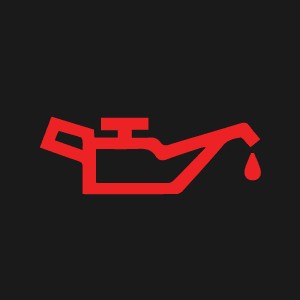 Oil Pressure Warning Light
Oil Pressure Warning Light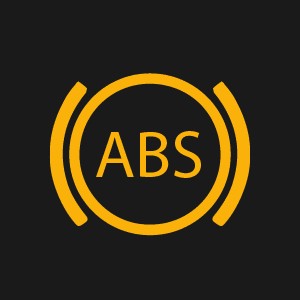 Tire Pressure Warning
Tire Pressure Warning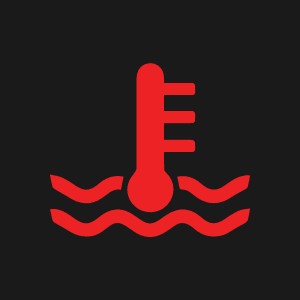 Engine Temperature
Engine Temperature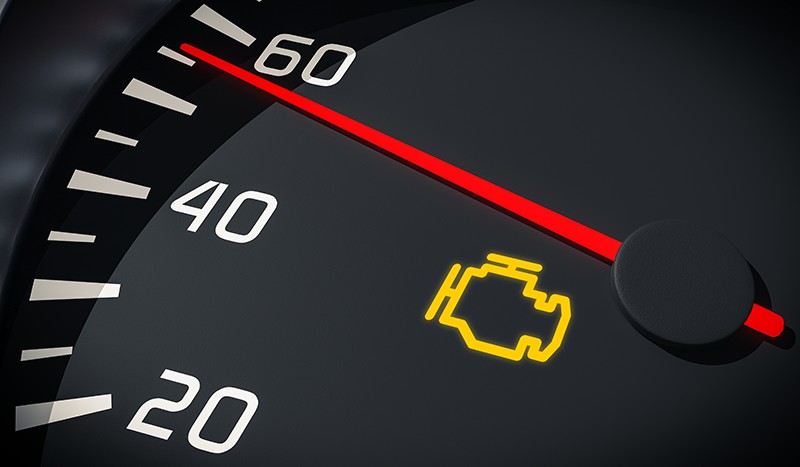 Check Engine Light
Check Engine Light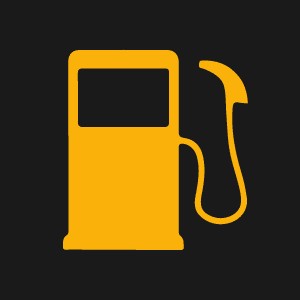 Low Fuel Indicator
Low Fuel Indicator Seat Belt Reminder
Seat Belt Reminder Security Indicator
Security Indicator Washer Fluid Indicator
Washer Fluid Indicator